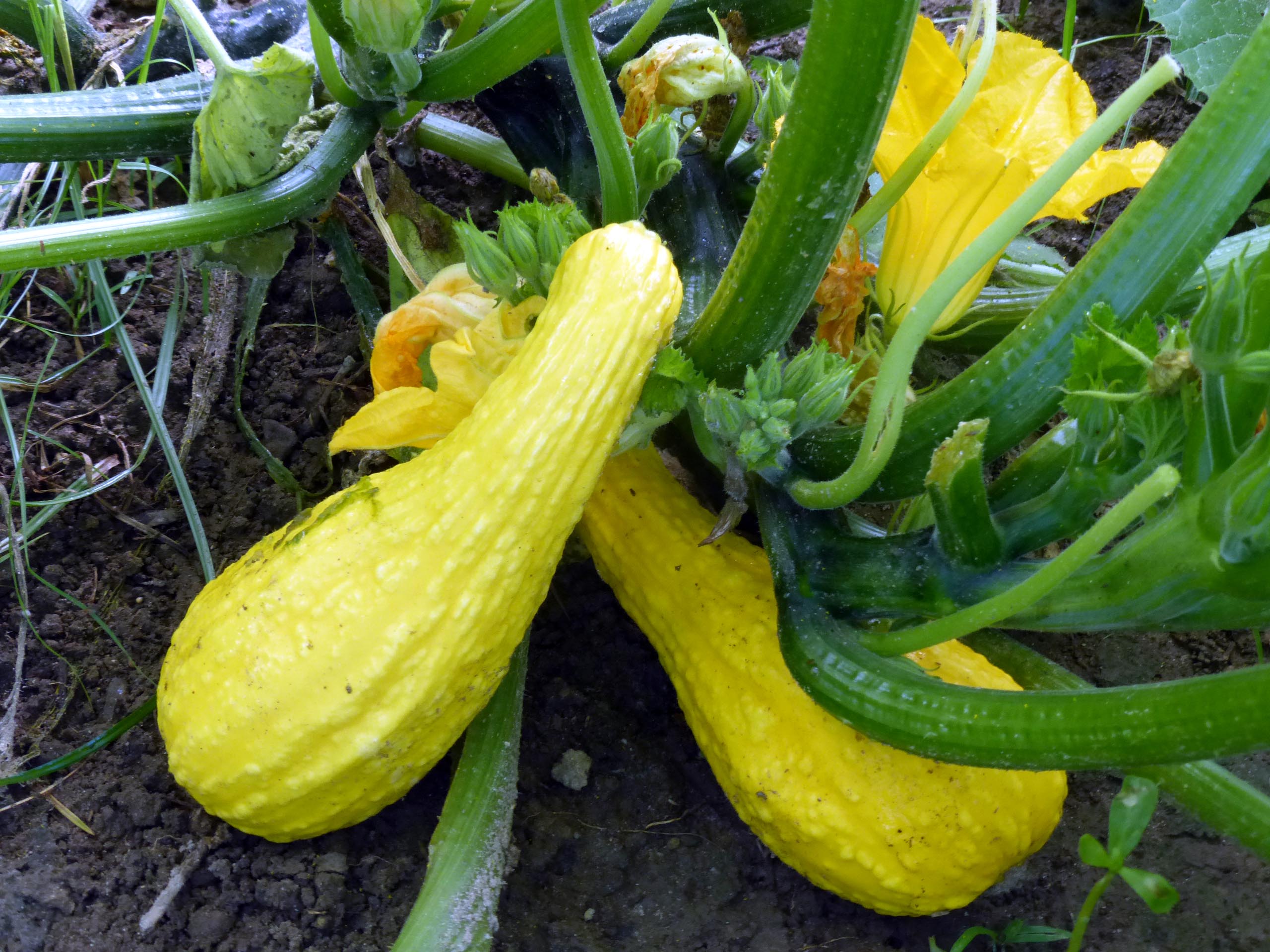Brown Spots On Yellow Squash

Brown spots on yellow squash
Halve the squash and seed it as you normally would, then use a sharp paring knife or a larger utility knife to cut away the soft or damaged spots. If mold has spread to the seed cavity or if the squash shows damage from animal pests, it should be discarded.
Why does my yellow squash have brown spots?
This is usually a direct result of an incorrect water balance in the plant, most often because the soil was allowed to dry out between irrigations and the plant wilted. Plant roots absorb calcium molecules surrounded by water and the plant moves the calcium to where it is needed within growing tissue.
What causes brown spots on squash?
Anthracnose is caused by the fungus Colletotrichum obiculare, and requires rainy, cool weather for several days for the disease to develop. The first symptoms of anthracnose are spots on the leaves that begin as yellowish or water-soaked areas. Spots enlarge and turn brown to black.
How can you tell if yellow squash is rotten?
What is this? If you find any signs such as these, discard your yellow squash immediately. Excessive slime on the surface indicates decaying produce beneath the skin's exterior; watery spots and a soggy appearance from inside of fruit indicate rotting flesh below.
What is toxic squash syndrome?
Cucurbit poisoning, often referred to as toxic squash syndrome, is an uncommon illness that can result in severe hair loss and symptoms similar to food poisoning. Cucurbitacins are compounds that can be found in the Cucurbitaceae family, which also comprises of cucumbers, melons, pumpkins, and squash.
What does squash fungus look like?
Fungus appears on squash leaves as brown spots. Brown areas commonly appear around leaf veins (R), and around the edges of the leaves (L). The affected leaves may appear discolored and fragile as well. You can see how yellow the affected leaves are.
What are the brown spots on yellow zucchini?
Blossom End Rot You'll first notice this disease as light brown spots that develop at the blossom end of young fruit. As the zucchini grows, the spots turn dark and leathery, and expand. Photo via Alamy. Blossom end rot isn't caused by a fungus or bacterium.
What does blight look like on squash?
Plectosporium blight Gardeners can recognize the disease by the white, diamond-shaped lesions on vines and round lesions on fruit and leaves. In severe infestations the vines and leaf petioles turn white and the leaves die. Lesions allow rot pathogens to infect the fruit.
What does mosaic virus look like on yellow squash?
Squash mosaic virus (SqMV) Symptoms consist of pronounced chlorotic mottle, green veinbanding, and distortion of leaves of young seedlings. On mature plants, leaves show intense dark green mosaic, blistering, and hardening, suggestive of a hormonal herbicide effect (first image below).
What does squash rot look like?
You may first notice a discoloration on the ends of these early fruits that looks kind of like a water stain. As blossom end rot contiunes to develop the discoloration darkens and the fruit becomes misshapen and sunken in.
How do I know if I am overwatering my squash?
Stunted slow growth accompanied by yellowing leaves is also a symptom. Leaves falling off often accompanies this symptom. If your plants have yellowing leaves and old leaves, as well as new leaves that are falling at the same accelerated rate, you are overwatering.
Can you get food poisoning from yellow squash?
Although squash is rich in nutrients, it can make you ill if you're not careful. Squash can contain cucurbitacin E, which is a toxic compound that can cause cucurbit poisoning or toxic squash syndrome.
What is the color of rotting squash?
A soft mushy rot of the stem, which turns dark brown at the base, may be visible when soil is removed. Early infections appear as a root rot with light-color, water-soaked areas that turn darker.
Can you eat yellow squash with mosaic virus?
Are squash and melons affected by mosaic virus safe to eat? “Yes,” says Nebraska Food Safety Educator Carol Larvick, citing information from Minnesota Extension. “These viruses are specific to plants and do not harm humans.
What happens if you eat old squash?
The most common symptoms associated with toxic squash syndrome include diarrhea, vomiting, and abdominal pain. In extreme cases, toxic squash syndrome has caused swelling in the liver, gallbladder, kidney, and pancreas.
How common is squash poisoning?
Toxic squash syndrome Cucurbit poisoning is a very rare syndrome, and the toxin involved has not been well-studied, Horowitz noted. In 2012, emergency room physicians at Oregon Health & Science University saw two patients with toxic squash syndrome, both of whom had eaten squash from a home garden.
Can you get botulism from squash?
Pumpkin and winter squash are also low-acid food (pH > 4.6) capable of supporting the growth of Clostridium botulinum bacteria which can cause the very serious illness, botulism, under the right storage conditions.
How long does squash poisoning last?
A couple of grams of this extremely bitter squash can cause diarrhea and stomach cramps that can last for up to three days.
What does Cercospora look like?
The disease appears as small (2-3mm) round grey spots with reddish margins. Under humid conditions and with the use of a hand lens, black spots (spore producing structures) can be seen in the centre of the lesions, which helps to distinguish it from Ramularia.
How do I get rid of squash fungus?
A better treatment solution for your squash plants is baking soda. Baking soda is an excellent option for treating powdery mildew. It is readily available in your home and will not cause any harm to the surrounding vegetable plants. With the baking soda method, you will also need some cooking oil and some dish soap.









Post a Comment for "Brown Spots On Yellow Squash "